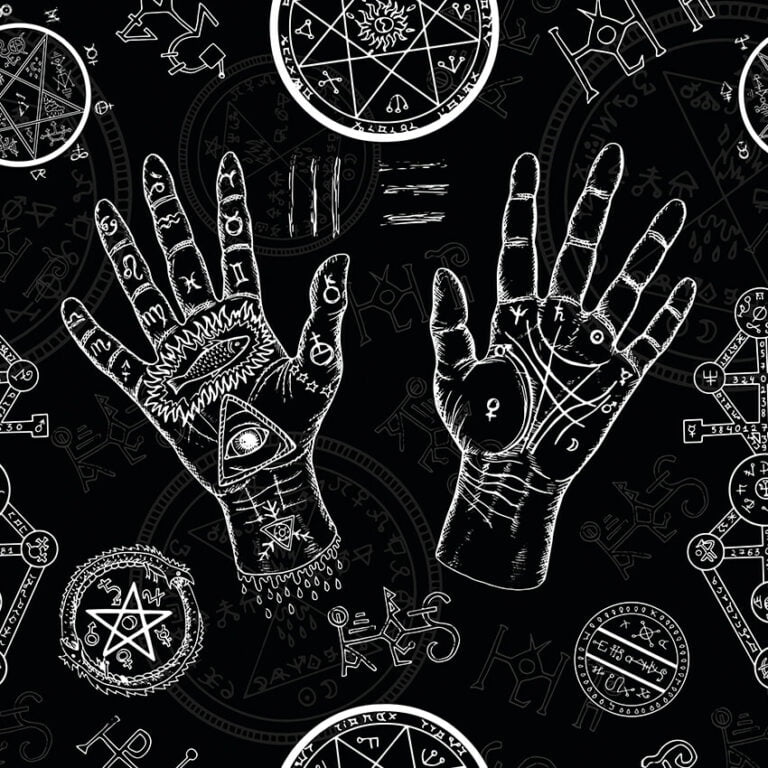One of the most exciting things about the metaphysical sciences is exploring new portals of discovery – at one point, all of us were new to astrology, Tarot, crystals, or whatever our chosen form of interpretation may be.
While it’s always rewarding to master a new craft and become more adept at pushing our knowledge further, sometimes we may grow comfortable with our methods & become stuck in a rut. When we stop learning new mediums though, we close ourselves off to different avenues of self-exploration. Thankfully it’s easier than ever in the digital age to find information on new ways to evaluate your spiritual and emotional self.
I was recently placed in this exact position when a friend asked if I had ever had my palm read. When I confessed that I had not, they asked me what I knew about palmistry. The simple answer? Very little. I had become so comfortable with my usual forms of analysis that I had stopped exploring different avenues of discovery years ago. It made me curious though, so I decided to do a little research.
The History of Palmistry
Palmistry is the modern term for chiromancy, from the Greek meaning ‘hand divination’. It is the study of the lines and palmar features of an individual’s hand, found all over the world since around 400BC. There has been some debate as to where its genuine origins lay, as there is evidence in ancient art and texts of palmistry existing in India, China, and Romania before it migrated to the European landmass where it gained great popularity.
Due to the global nature of palmistry, there are many forms of reading and interpretation; this variance in practice has led to some arguing it is most effective as a form of character influence and personality traits, whereas others claim it can be used to gain insight into one’s future.
There have been societies dedicated to the practice and scientific merit of palmistry throughout time, and many historical figures were intrigued by the art – Alexander the Great was noted for his interest in it, after being introduced to chiromancy by Aristotle.
So now that I knew a little more about what palmistry is, I had to ask myself…
How Does Palmistry Work?
As stated before, there are numerous variations on palm reading that change how the information might be translated. However, the most basic of information on palmistry tells us there are two key features to look at when reading a palm – the lines and mounts located within the dominant hand.
It is important to use the dominant hand if you are looking for future analysis, as this is the hand most palmists believe to be the extension of our conscious self & a manifestation of our path forward. If a reading were to be done on the non-dominant hand, this is more relevant to the subconscious and the past, which is key to interpreting and healing previous trauma.
The Lines:
The three core lines that will be interpreted in a palm reading are your heart line, your head line, and your life line.
While it may not seem very informative to only look at three line placements, there are numerous subtle variations within these lines that a trained chirologist will be able to interpret – how deep and long the line is, whether the line is unbroken or has small gaps, the texture of the line itself, the curvature of the line, and of course, how all three lines interact on your palm are just a few of the details that will uncover facets of your life relevant to their areas of influence.
The Mounts:
The mounts of your palm refer to the fleshy padded areas that cover each of the joints, as well as the areas along the sides and center of your hand.
As most commonly practiced forms of palmistry were based on the Roman formed system of interpretation, each of these areas is named after a god or goddess – Jupiter, Saturn, Apollo, Mercury, Mars positive, negative, the plane of Mars, Luna, Neptune, and Venus.
The designation of each mount corresponds to the attributes most notably related to that figure. Your Venus mount is relevant to your love life, while Mercury influences communication.
As with the translation of the lines, it is the details of each mount that creates a palmist’s reading of your hand. Skin texture and color, tissue density, palmar skin patterns and flexibility of each mount all give insight during a session.
While some palm readers will also factor in the fingers, knuckles, nails and other features of the entire hand, the core of the information divined from a reading will be contained within the palm itself, and this is where you should focus your studies should you choose to start exploring the art of palmistry.
With countless books, tutorials, and videos available over the web, there is a wealth of knowledge to get you started in palmistry. You could even try finding a local palm reader in your area to give you a preliminary read and help you understand the basics. Check out our palmistry breakdown right here.
The Answers Are In Your Hands
However you choose to start, palmistry is an informative tool you can add to your repertoire for growth and self-discovery, along with your trusted favorites. It is relatively easy to practice at home, but a dedicated study is necessary for accurate interpretation of information- just make sure you check out a few more books or articles before offering readings to your friends!
